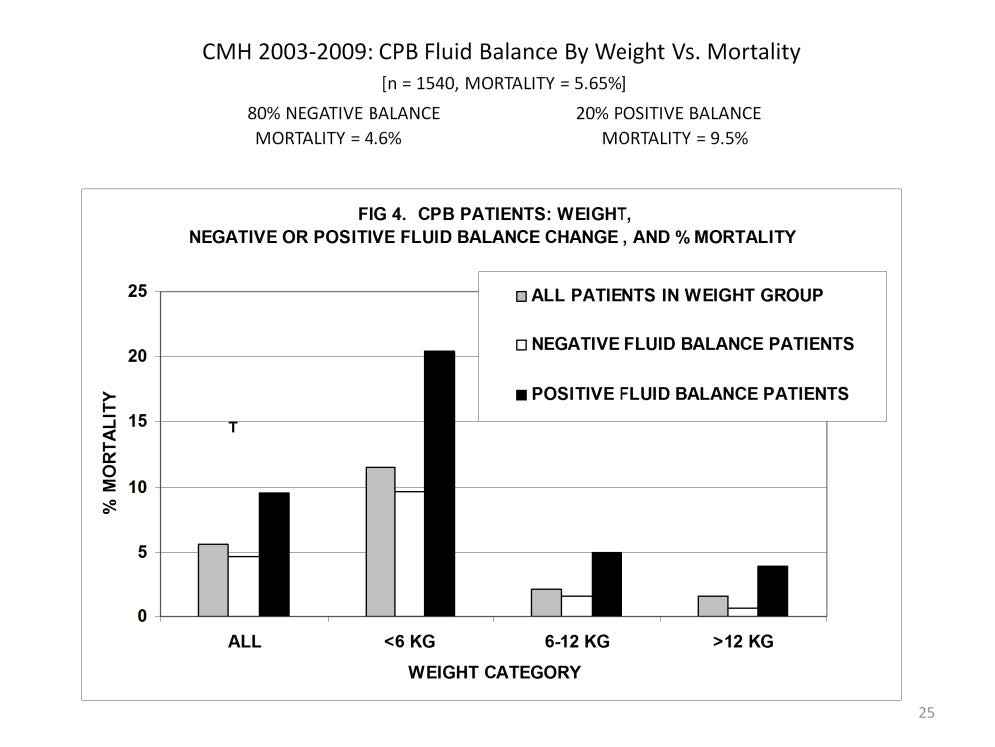
Fluid balance at the end of cardiopulmonary bypass (CPB) correlates to mortality. Acting as its own control, this population of 1540 CPB patients, some adults but mostly pediatric, has a mortality just over 5%. Eighty per cent of the patients had zero or negative fluid balances at the end of CPB and 20% had positive balances. Patients with a positive balance had a mortality of 9.5%, twice as high as those with a zero or negative balance at 4.6%. Infants (<6 KG) had an overall mortality of 11.3% with positive balance patients having twice the mortality as negative balance patients.
As the patient size and age increased, overall mortality fell. However larger patients with positive balances had 4 to 6 times the mortality as their negative balance counter-parts. The reason for this discrepancy compared to the infant group is unknown. But it is obvious that large patients with a positive fluid balance have a greater sensitivity to fluid overload than do infants and large patients with a negative balance.

Perfusion Theory is an educational platform for the Oxygen Pressure Field Theory (OPFT). August Krogh’s theoretical concept of the oxygen pressure field is explained and then applied to clinical applications in perfusion practice.